Aviation
As aviation designers, we integrate the diverse needs of passengers, tenants, employees, and owners into resilient airport facilities that bring surprise and delight through experience-focused, award-winning aviation design.
“
Airports have an opportunity to reinvent themselves as multipurpose facilities that enhance the passenger experience and make the traveler journey more efficient.
—Tim Sullivan, Aviation leader
27 Items
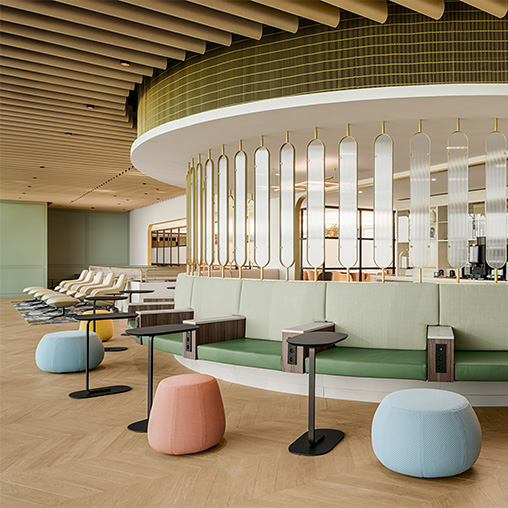
Star Alliance Lounge at Charles de Gaulle Airport
Paris, France
Parisian charm meets modern design at the Star Alliance Airport Lounge at Charles de Gaulle Airport, designed by Gensler’s Newport Beach and Paris offices.
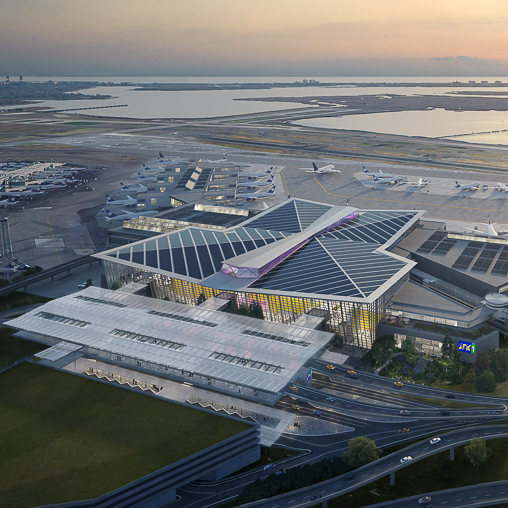
New Terminal One at JFK International Airport
Queens, New York
As part of the modernization of JFK International Airport, Terminal One will prioritize accessibility, convenience, and the ultimate passenger experience.
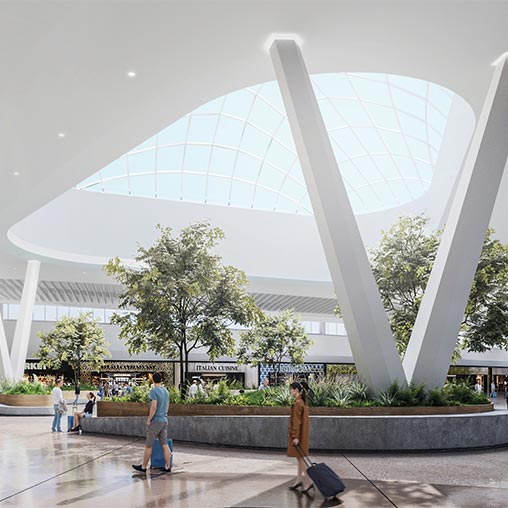
John Glenn Columbus International Airport Terminal
Columbus, Ohio
The new terminal at John Glenn Columbus International Airport enhances passenger experience, expands travel capabilities, and provides modern amenities.
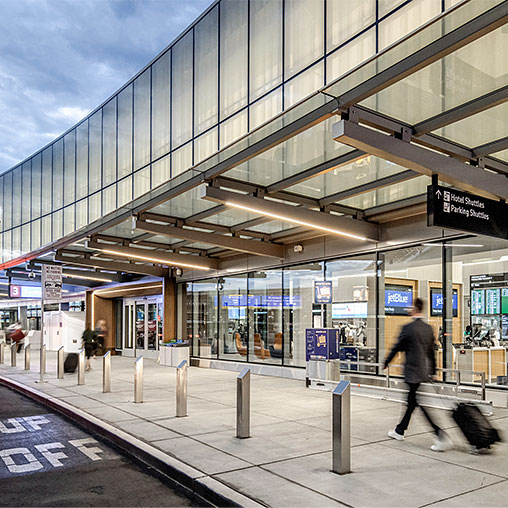
San Francisco International Airport, T1 Net Zero Program
San Francisco, California
San Francisco International Airport (SFO) has set the goal of becoming the first airport in the world to achieve zero carbon, zero waste, and zero net energy.
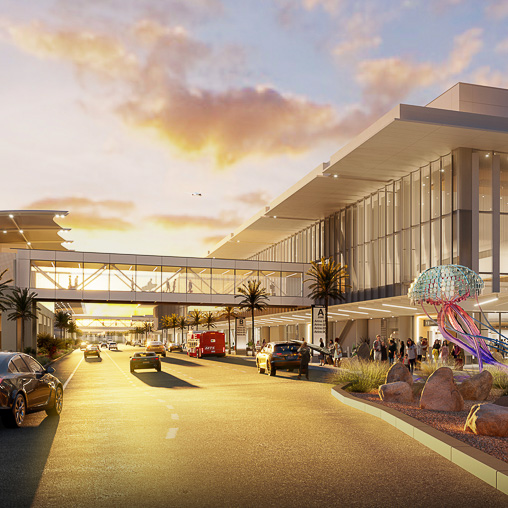
San Diego International Airport Terminal 1 & Roadways
San Diego, California
Designed as a “Glassy Garden Pavilion,” San Diego Airport’s new Terminal 1 and its corresponding concourse will include 30 new airport gates and amenity spaces.
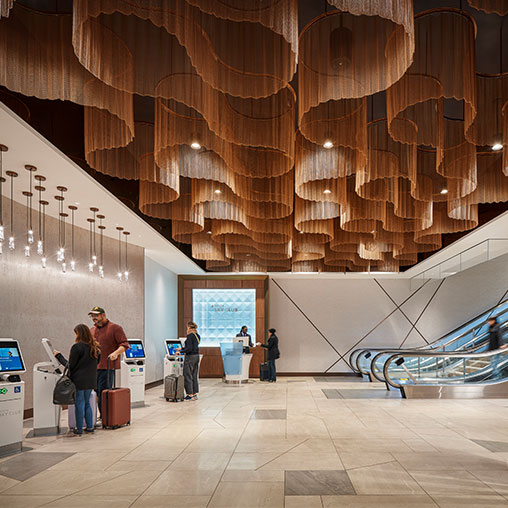
Delta Sky Club at LAX
Los Angeles, California
Gensler designed intimate spaces to reflect local experiences within the Delta Sky Club lounge to give premium passengers a sense of privacy and hospitality.
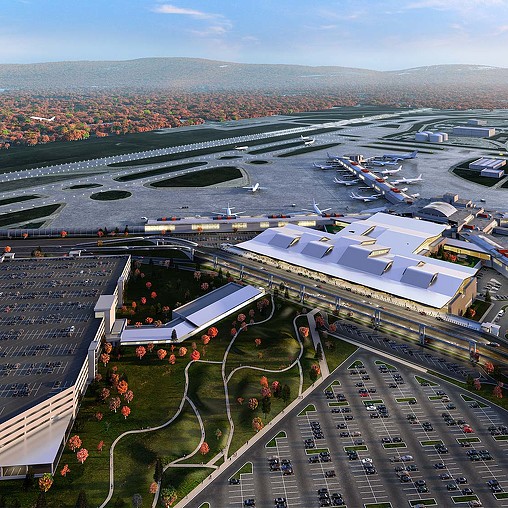
Pittsburgh International Airport
Pittsburgh, Pennsylvania
Pittsburgh International Airport's update follows a design philosophy that combines nature, technology, and community as a nod to Pittsburgh's location.
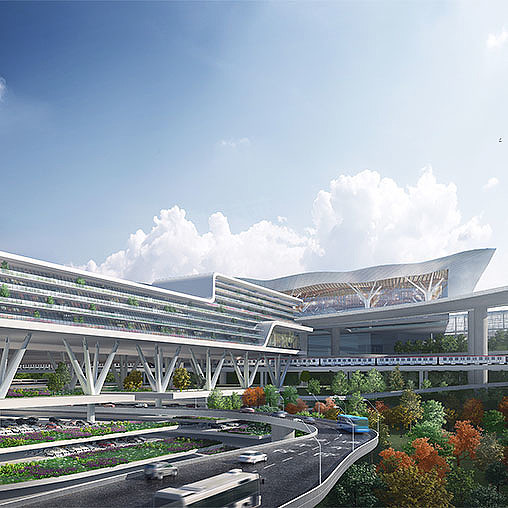
Kunming Changshui Airport
Kunming, China
Kunming Transport Ecosystem, a 17 million-square-foot transit-oriented mega complex, features two hotels, a bus terminal, a high-speed rail station, two subway stations, and a regional rail station that connects the region to the world’s air routes.
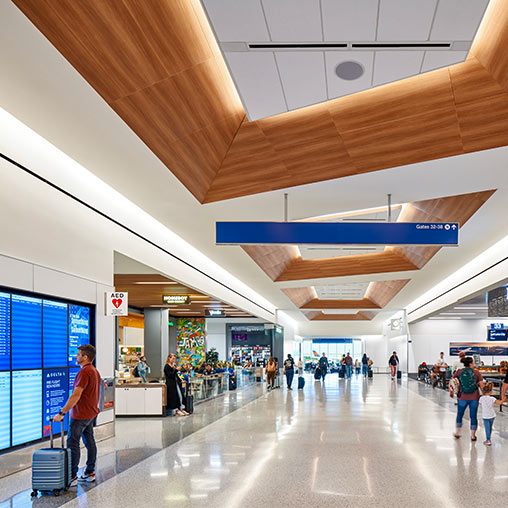
Delta Sky Way at LAX
Los Angeles, California
Delta Air Lines’ redevelopment of Terminals 2 and 3 at LAX represents a strategic move to position both the airline and the airport for a thriving future.
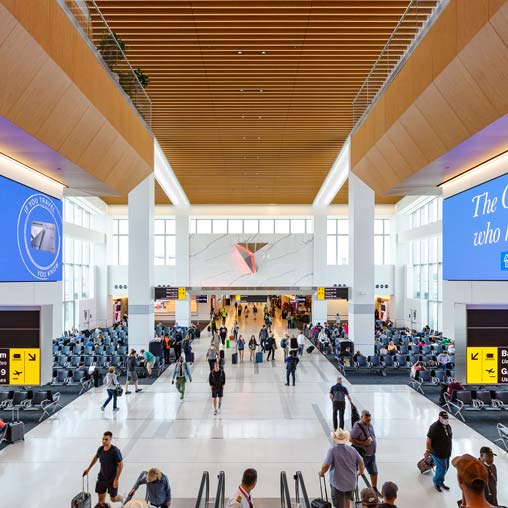
Delta’s Terminal C at LaGuardia Airport
Queens, New York
With a hospitality-driven design focus that elevates the airport experience, Delta’s new Terminal C at LaGuardia Airport propels the future of the airline industry to take flight.
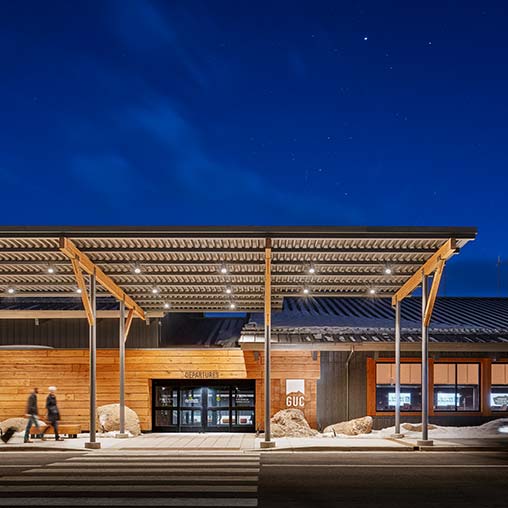
Gunnison-Crested Butte Regional Airport
Gunnison, Colorado
Gensler’s terminal renovation at Gunnison-Crested Butte Regional Airport drastically improves the passenger experience and enhances operational efficiency.
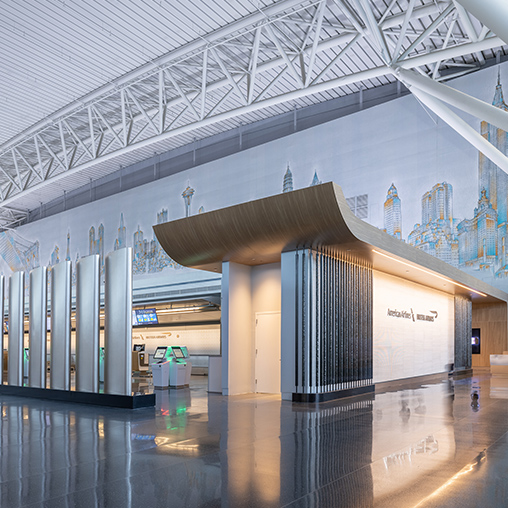
American Airlines & British Airways Premium Experience at JFK International Airport
Queens, New York
As part of British Airways co-locating with American Airlines in the newly expanded Terminal 8 at John F. Kennedy International Airport, Gensler was enlisted to design the new check-in and lounge experiences.
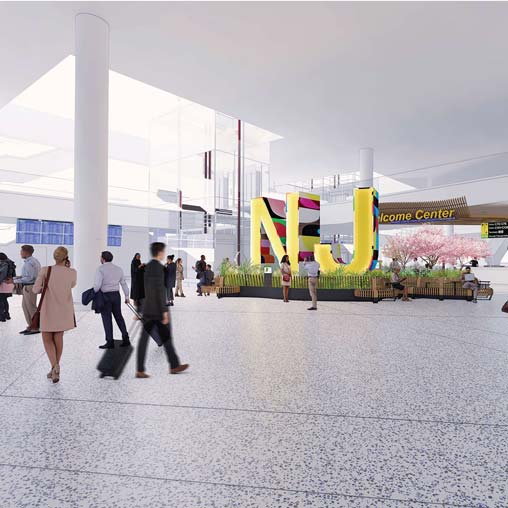
Terminal A at Newark Liberty International Airport
Newark, New Jersey
The new Terminal A at Newark Liberty International Airport is a modern, state-of-the-art facility by Gensler with a design capacity of 14 million annual passengers and 33 common-use gates.
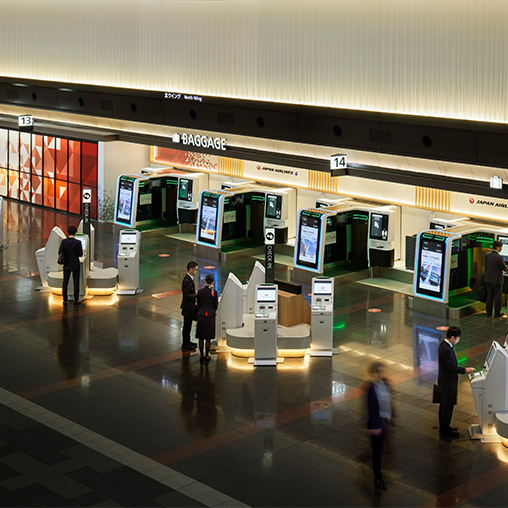
Japan Airlines Check-In Area
Multiple Locations, Japan
Gensler designed the departure lobby of JAL’s domestic airports, including Haneda, Shin-Chitose, Itami, Fukuoka, and Okinawa.
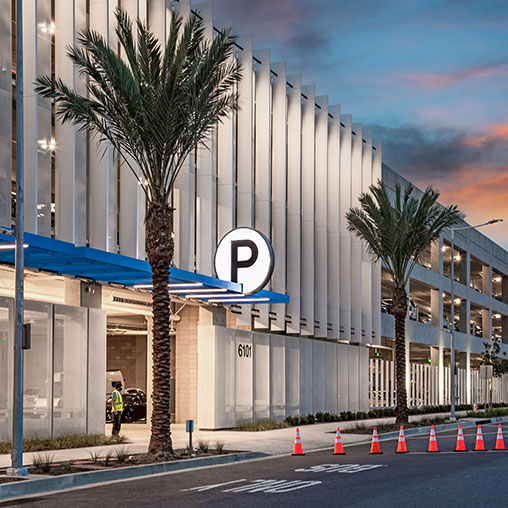
LAX Economy Parking Garage
Los Angeles, California
The LAX Economy Parking Structure, the first component of LAX’s landside modernization program, is the new front door to the airport.
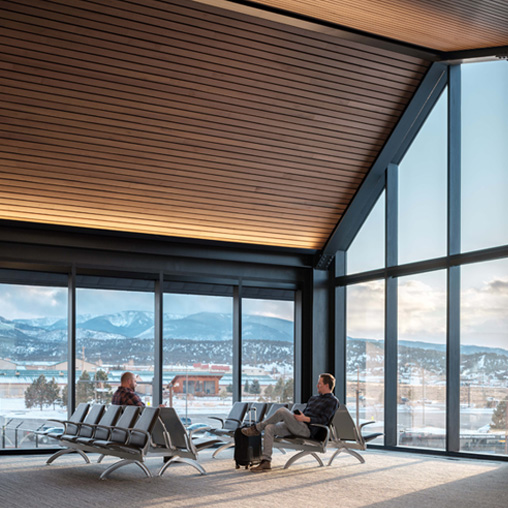
Eagle County Regional Airport
Gypsum, Colorado
Gensler’s design team was challenged with resolving hold room sizing issues to improve the overall passenger experience.
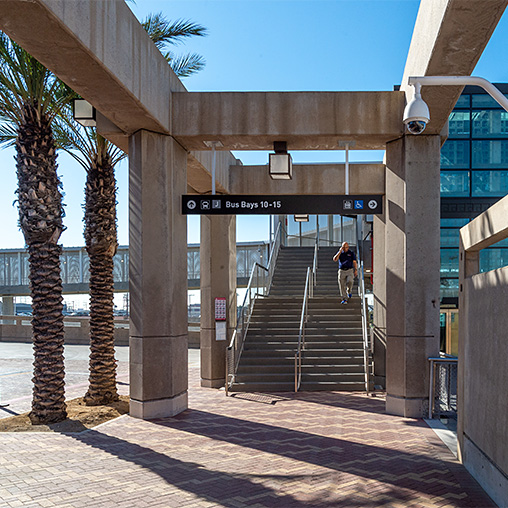
Union / Patsaouras Plaza Busway Station
Los Angeles, California
The Patsaouras Bus Plaza provides an easier, safer travel experience for LA Metro and Foothill Transit riders to access connections at Union Station.
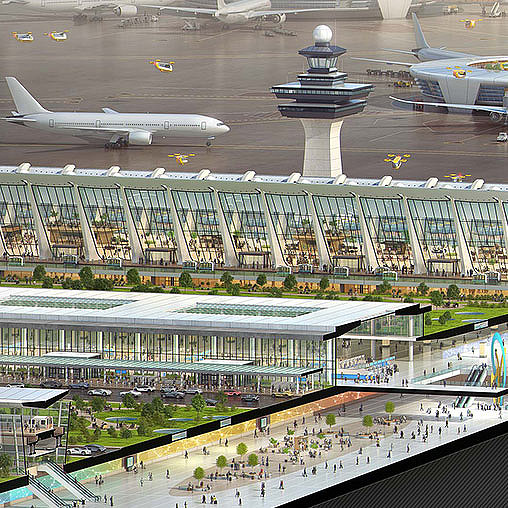
A New Dulles Airport: Reimagined for a Post-COVID World
Washington, D.C.
As part of a coronavirus design challenge, Gensler Aviation Leaders reimagined Washington’s Dulles Airport for the socially-distant future, focusing on making the experience feel personal, not sterile.
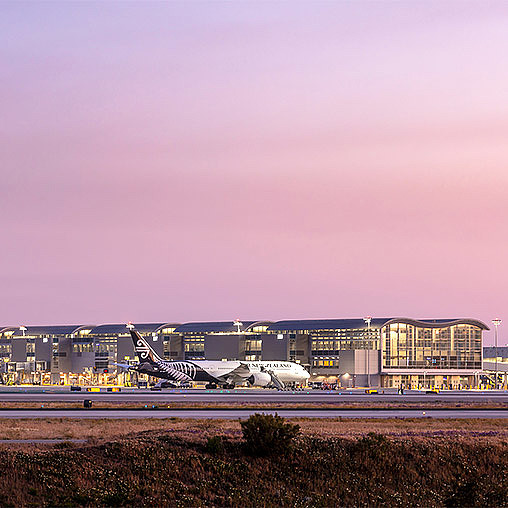
LAX West Gates at Tom Bradley Terminal
Los Angeles, California
LAX West Gates is part of a multi-billion-dollar modernization program to provide a world-class travel experience and improve efficiency at the airport.
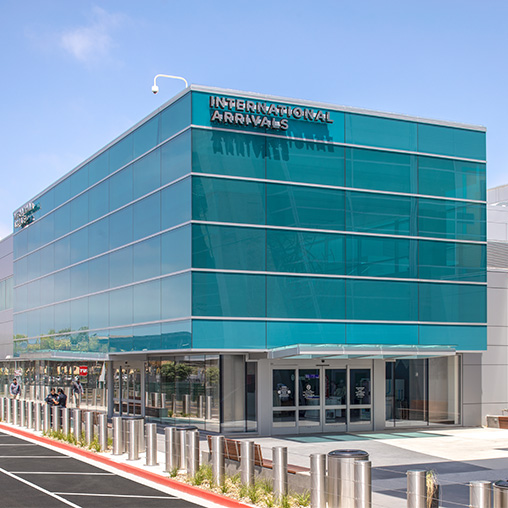
San Diego International Airport, Federal Inspection Services Facility
San Diego, California
The San Diego International Airport international arrival hall and Federal Inspection Services Facility was designed “inside out” to be intuitive and calming.
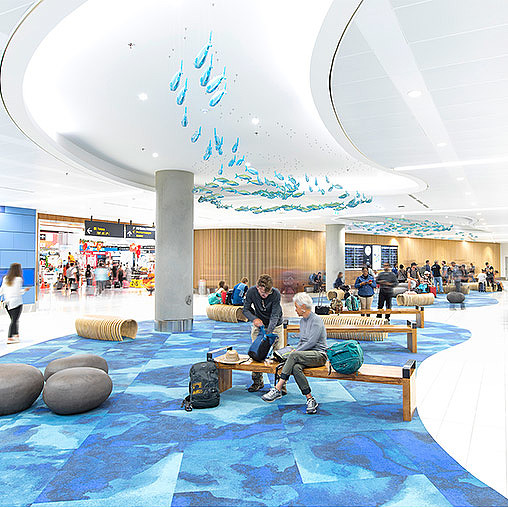
Auckland Airport International Departures Experience
Auckland, New Zealand
Gensler led design efforts for Auckland Airport’s major airport-wide development and upgrade program, contributing towards the airport’s 30-year master plan.
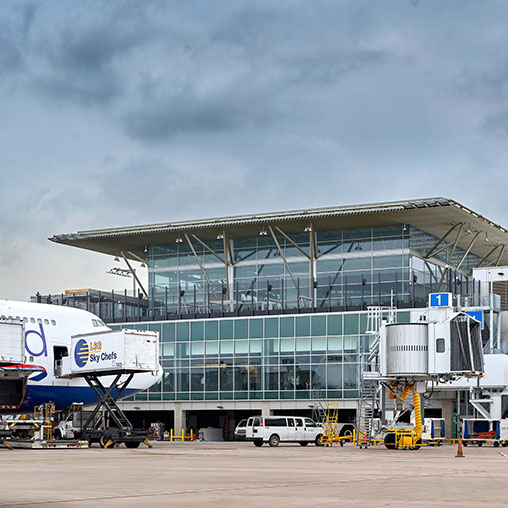
Austin-Bergstrom International Airport Expansion
Austin, Texas
Unprecedented growth of the Austin metro area has led to a significant increase in passenger traffic at Austin-Bergstrom International Airport. To increase...
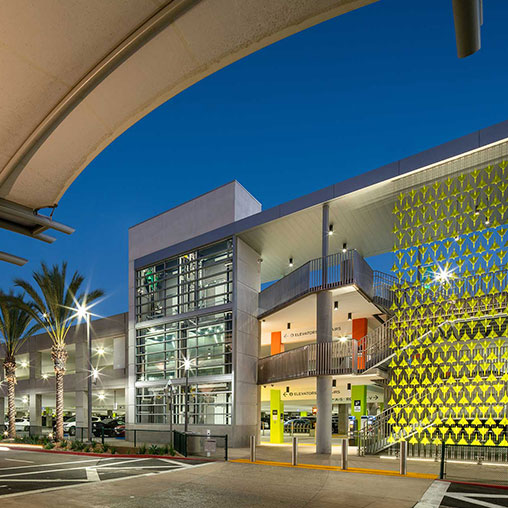
San Diego International Airport, Terminal 2 Parking Plaza
San Diego, California
This three-story, 3,000-space parking plaza designed by Gensler with state-of-the-art sustainable features at the San Diego International Airport is not a typical parking structure.
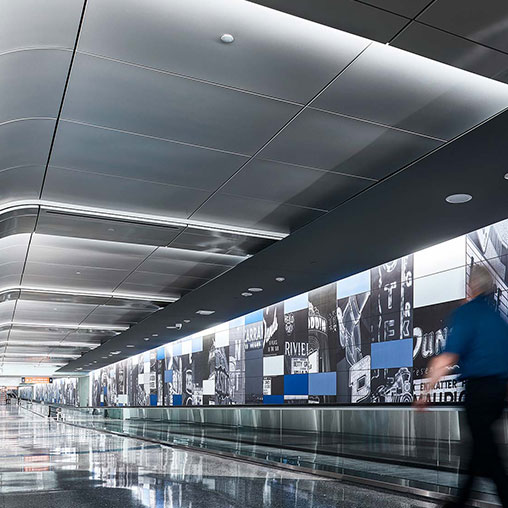
McCarran International Gates Expansion
Las Vegas, Nevada
If tourism is the life-blood of the Las Vegas economy, McCarran Airport is its heart. Its $51 million International Gates Expansion project aims to increase...
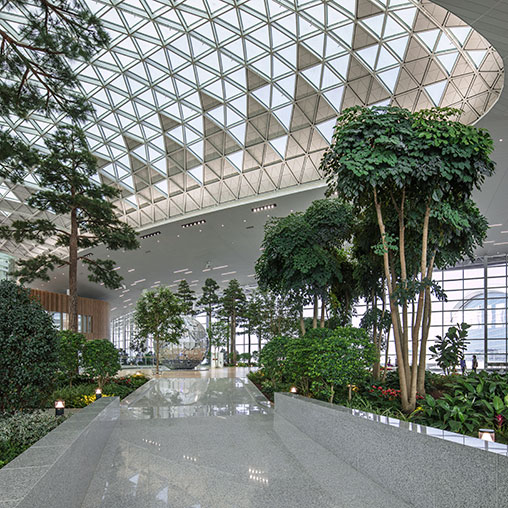
Incheon International Airport
Incheon, South Korea
Incheon Airport Terminal 2 is designed to surpass standards of excellence for international travel and was recognized by the International Architecture Awards as the 2022 First Prize Winner.
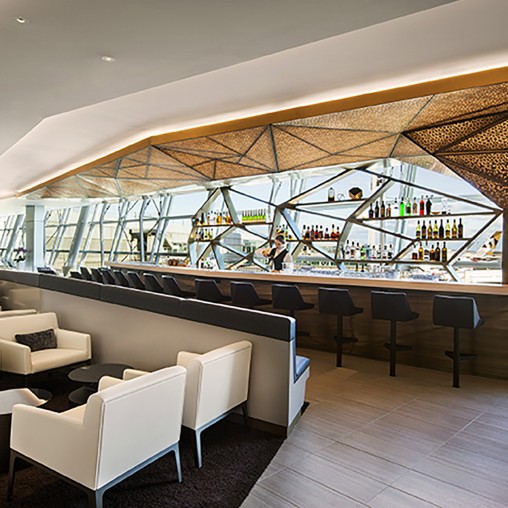
Etihad Flagship Lounge, JFK International Airport
Queens, New York
Etihad Airways offers a full luxury experience in air travel. Because the guests' journey begins long before stepping aboard a plane, Etihad is creating a...
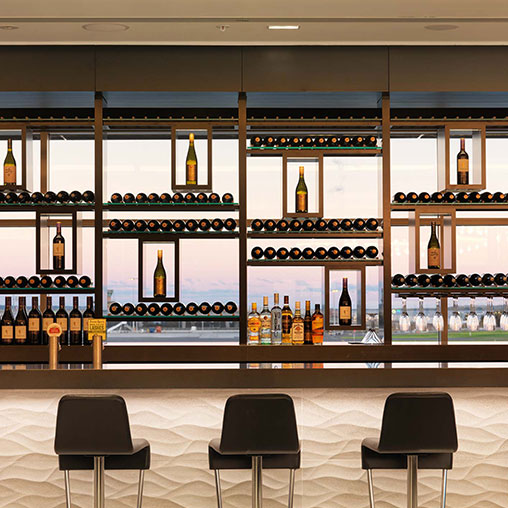
Air New Zealand Lounges
Multiple Locations
Designed as havens for travelers, Air New Zealand airport lounges around the globe offer a clean, modern vernacular, with distinctions between locations...
INSIGHTS
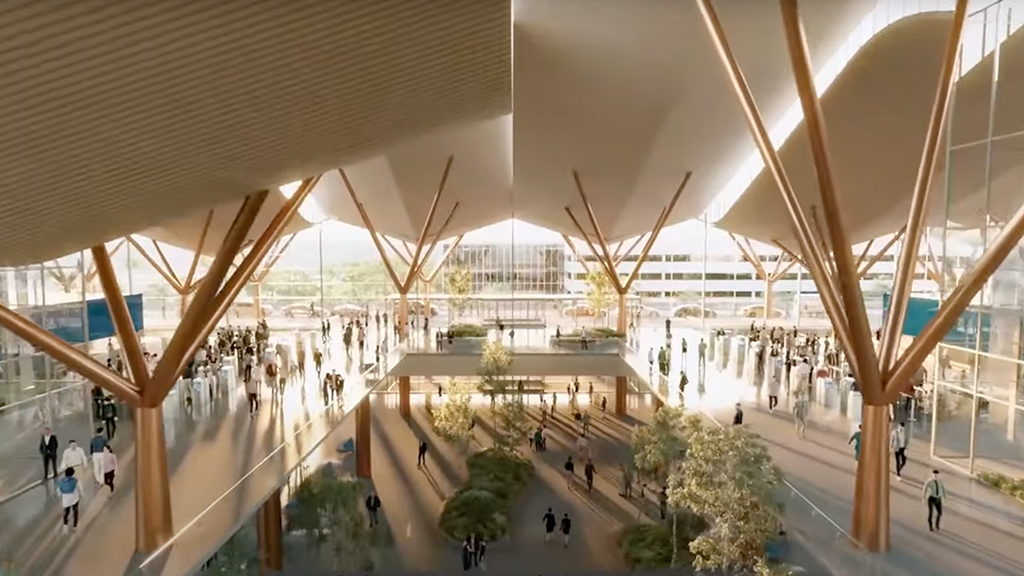
Video
The New Pittsburgh Airport: Redefining an Airport Through Design
Designed by Gensler + HDR, the new Pittsburgh International Airport is described as “a pavilion in Penn’s Woods” that creates a connection to the Western Pennsylvania region through nature, technology, and community.
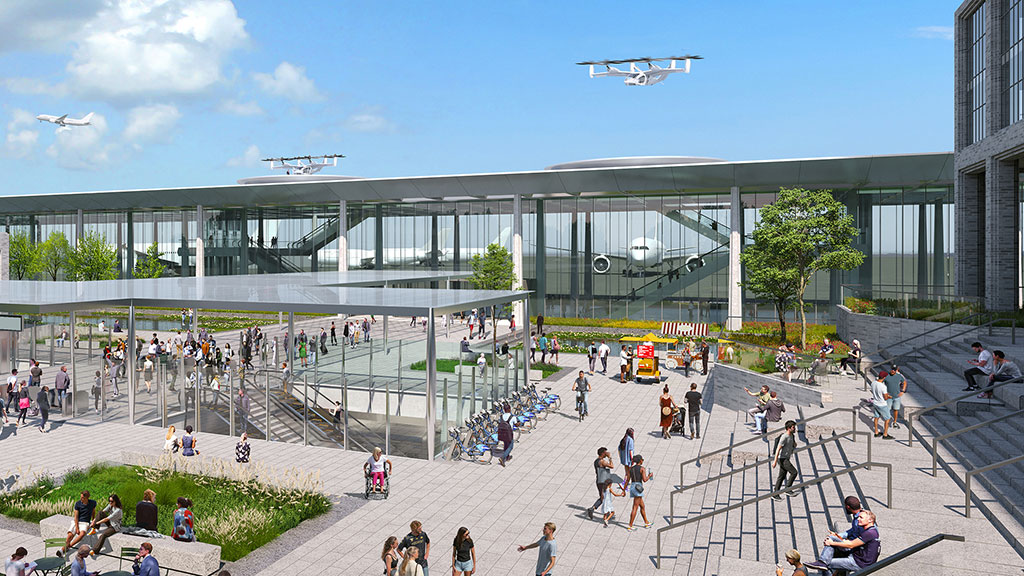
Blog
Urban Air Mobility Is Here. Here’s How Cities Can Adapt.
Advanced air mobility is ready for launch. The next crucial step: preparing buildings and infrastructure to get this sustainable mobility solution off the ground.
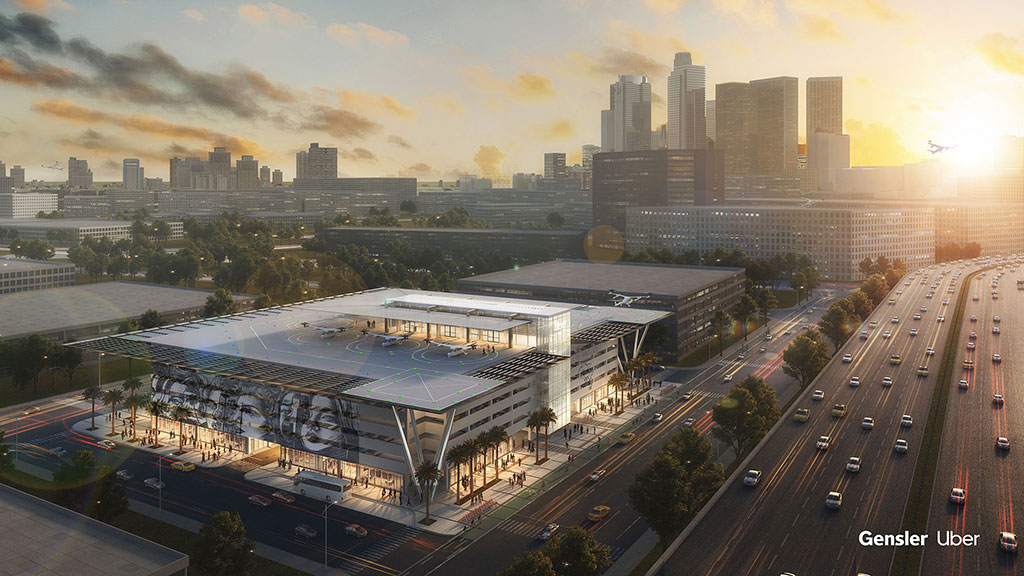
Blog
How eVTOLs Could Create a More Inclusive, Sustainable Future for Mobility
Advanced air mobility could have transformative effects on the way we live, creating an inclusive and sustainable future of mobility for all.
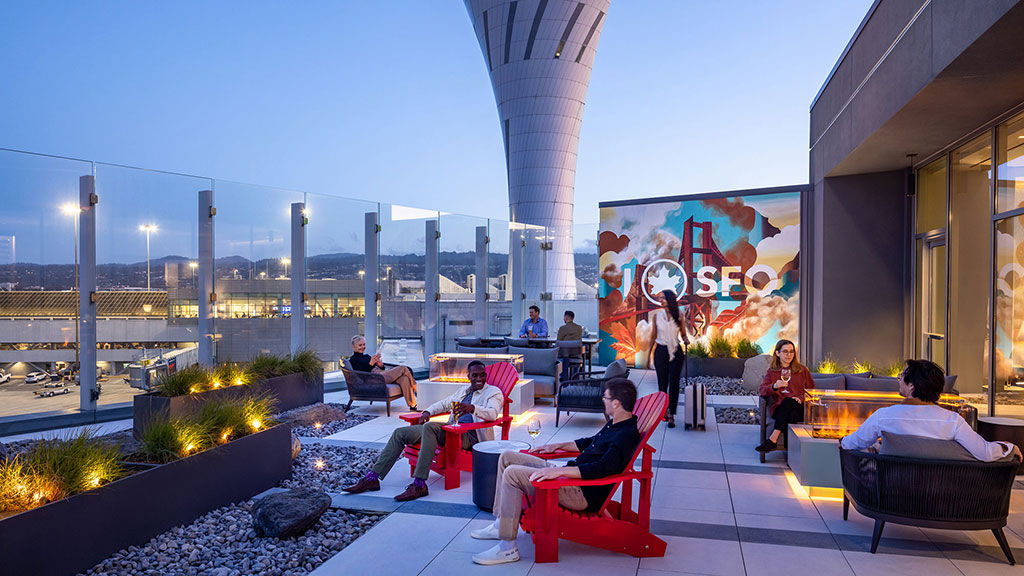
Blog
Elevating the Retail Experience: 4 Lessons From Airport Lounge Design
Here are four design insights from airport lounge environments that retailers can use to elevate retail consumer environments and experiences.
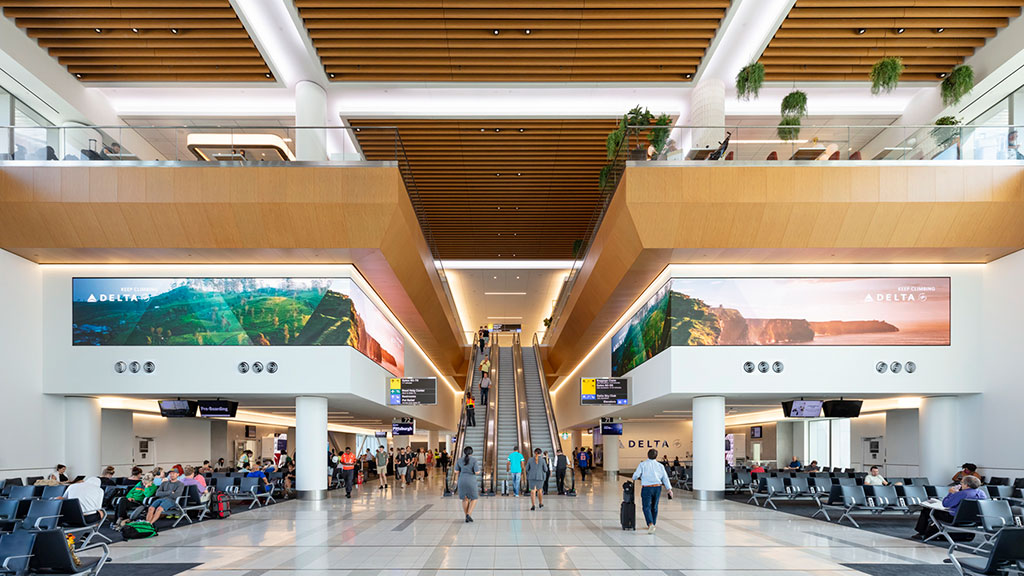
Blog
What Airports Can Learn From Work, Sports, Healthcare, and Retail
Here are five cues that airports can take from innovations, insights, and perspectives from other parallel industries.
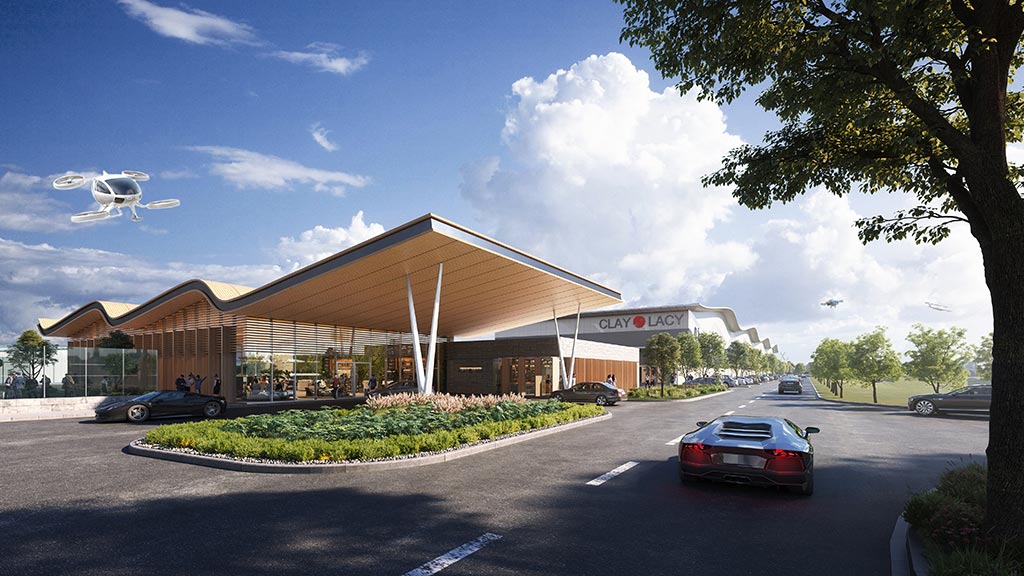
Blog
Fixed Base Operators: A Gateway to eVTOL Takeoff
The Advanced Air Mobility (AAM) and electric Vertical Takeoff and Landing (eVTOL) revolution is already here. See how eVTOL is taking off.
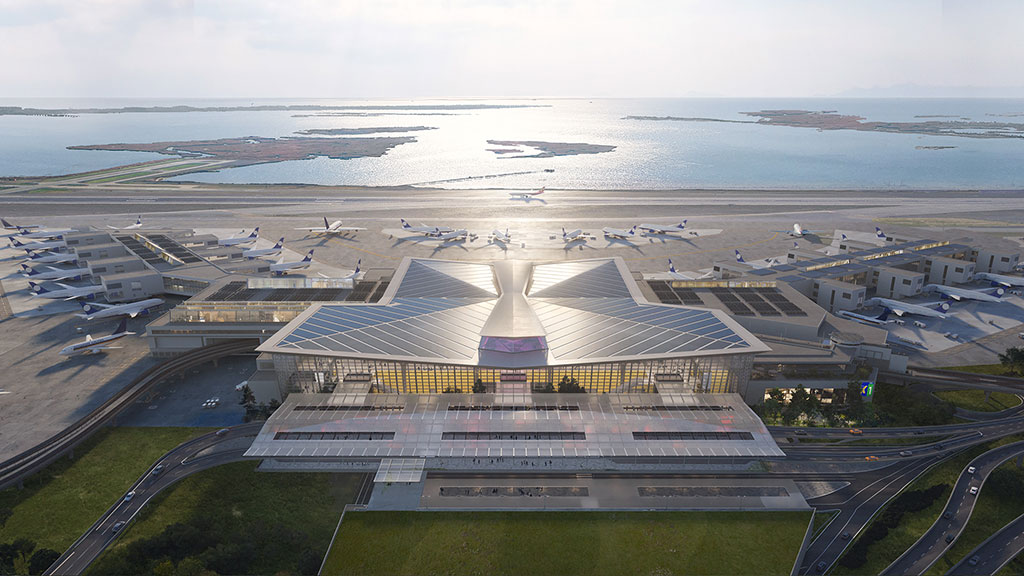
Blog
Reinventing the Airport as an All-in-One Facility
Can an airport simultaneously be a great international gateway, a thriving community asset, and an efficient transfer hub?
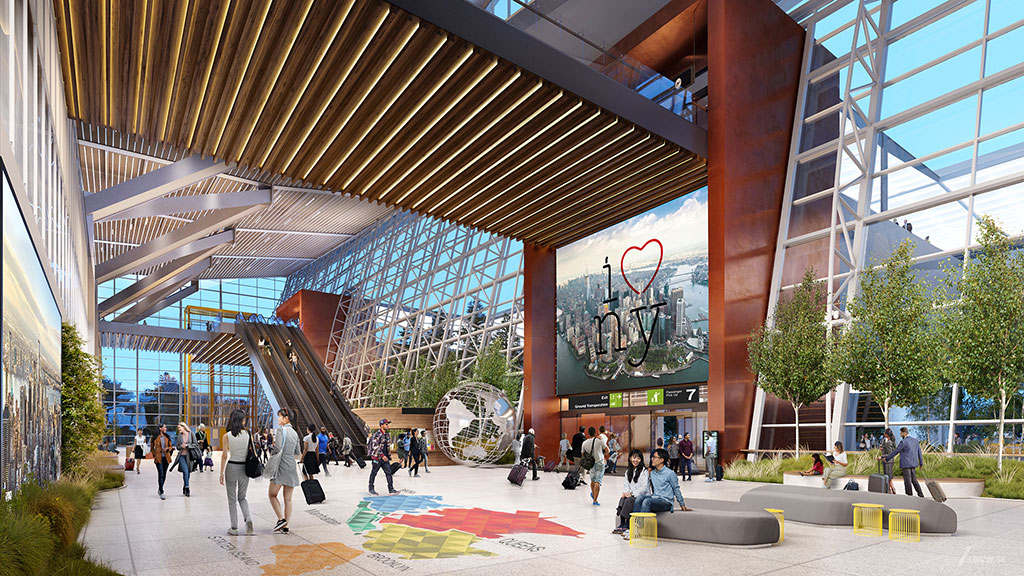
Blog
Why Airports Must Create a ‘Place of Sense’ to Engage Travelers
To transform a passenger’s journey from good to great, we believe the only way to create a sense of place is to first create a “place of sense.”
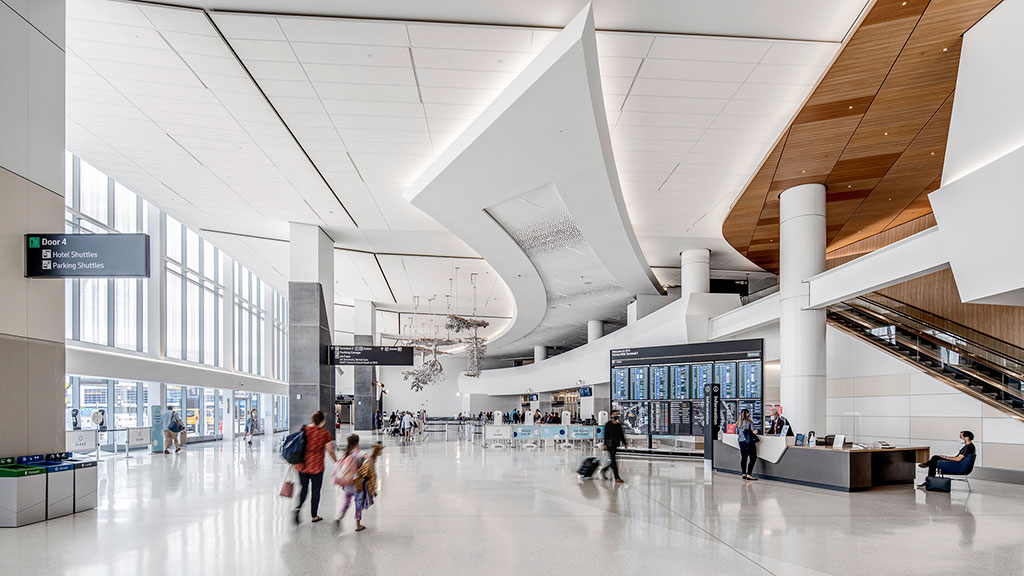
Blog
The Future of Travel? Start With the Future Traveler.
To be truly inclusive, airports must address a diversity of passenger and employee needs.
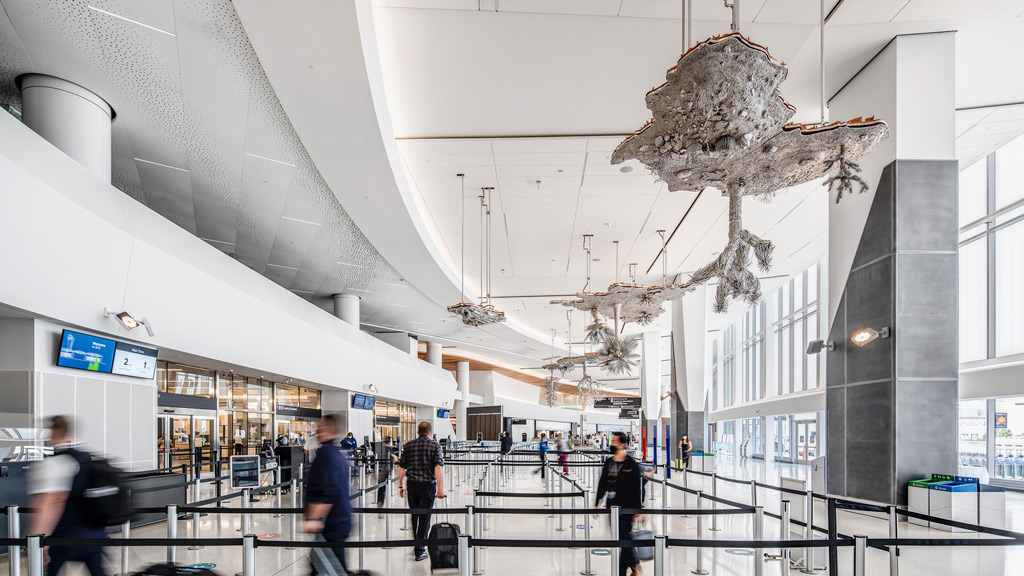
Blog
Airports Can’t Stop. Here’s How to Keep them Functional During Construction.
We share fresh optimism about how to improve the airport construction process. It starts with travelers’ experience as they pass through an airport with ongoing construction.
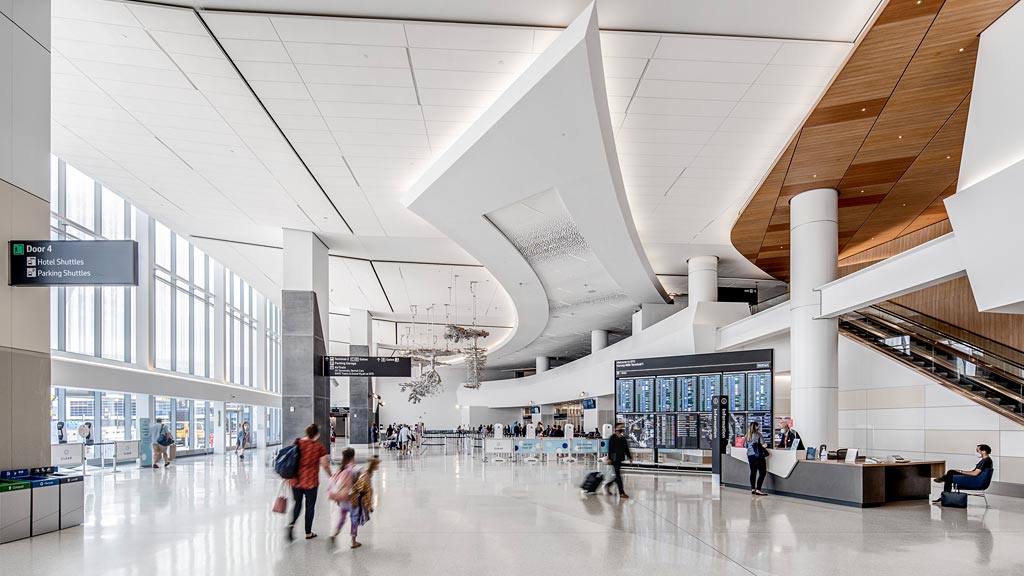
Case Study
Harvey B. Milk Terminal 1 Renovation
Reductions in energy, carbon, and waste impacts makes SFO’s Harvey B. Milk Terminal a sustainable benchmark for future airports by setting new standards through its Triple Zero Challenge.
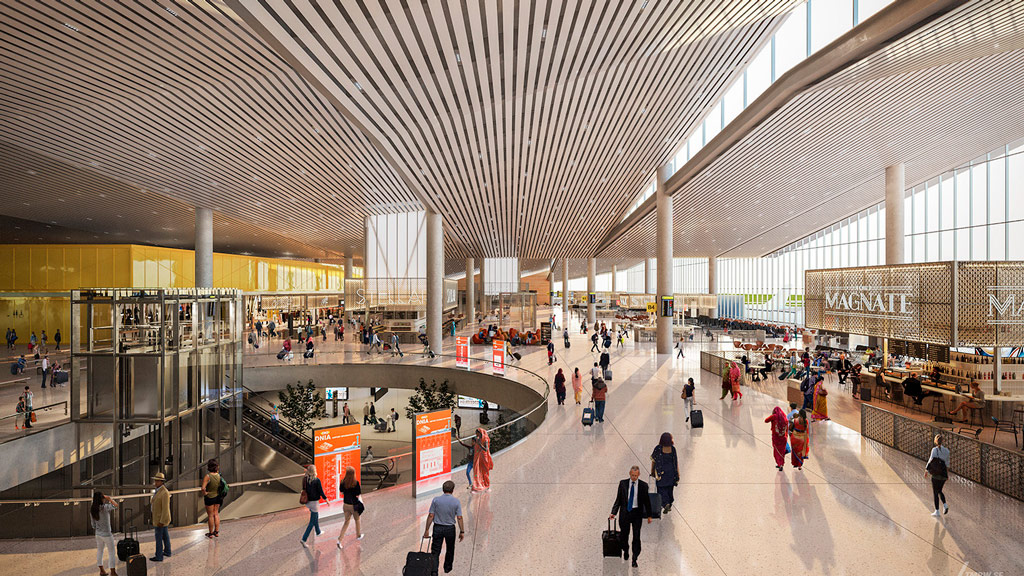
Blog
The Airport of Choice
For those who elect to travel, having the ability to curate a custom airport journey based on individual needs and preferences could encourage people to return to the skies.
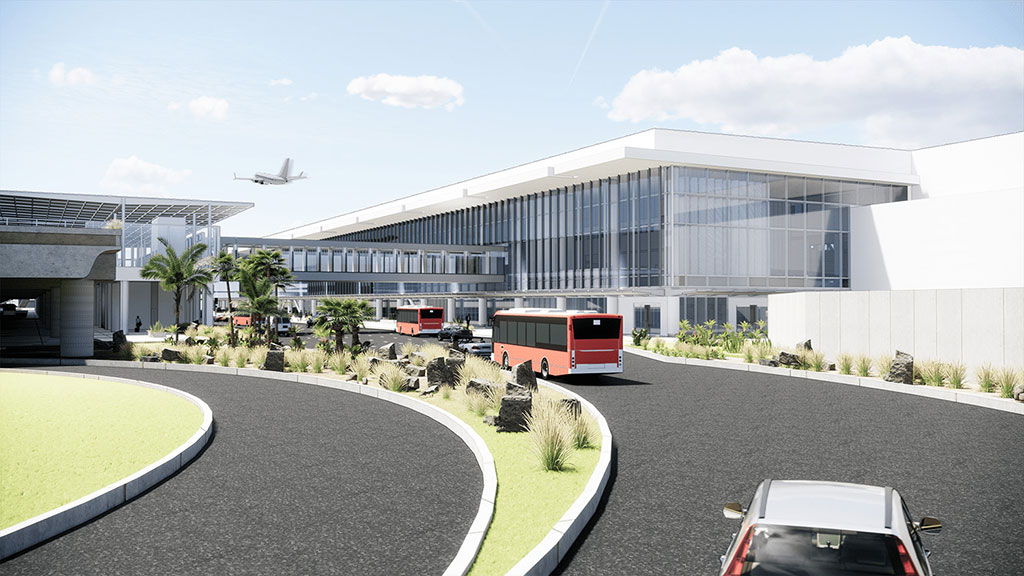
Blog
How the Bipartisan Infrastructure Law’s FAA Airport Terminals Program Will Impact U.S. Airports
Here’s how the first $1 billion in funds from the Bipartisan Infrastructure Law's FAA Airport Terminals Program is being used to improve the traveler experience — and how other airports can take advantage of these new opportunities.
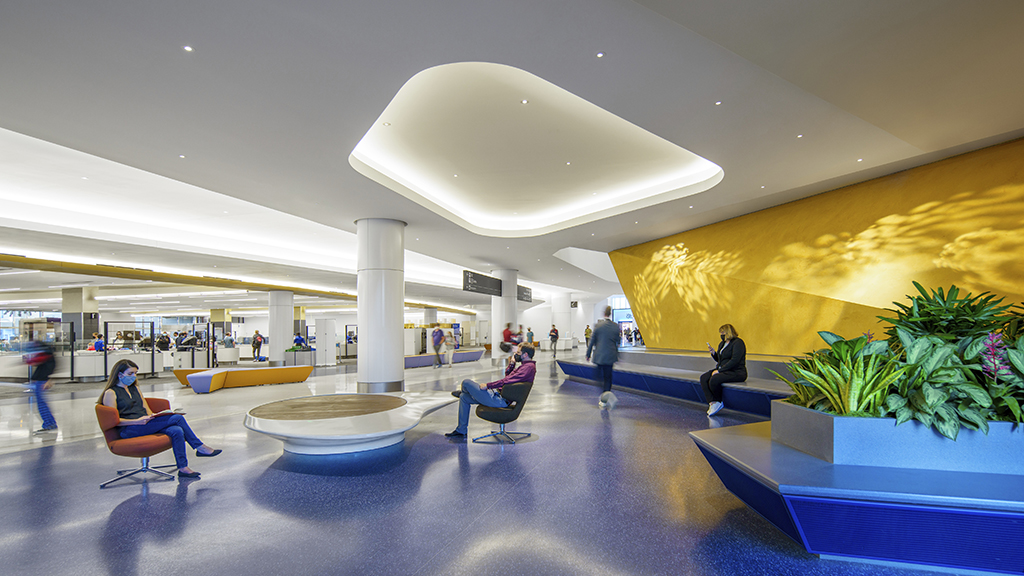
Blog
What Workplace Can Learn From Airports
The best airports put a hyper focus on the passenger experience, so what if we leveraged the same lessons from the best in aviation design to create a more seamless, equitable workplace experience?
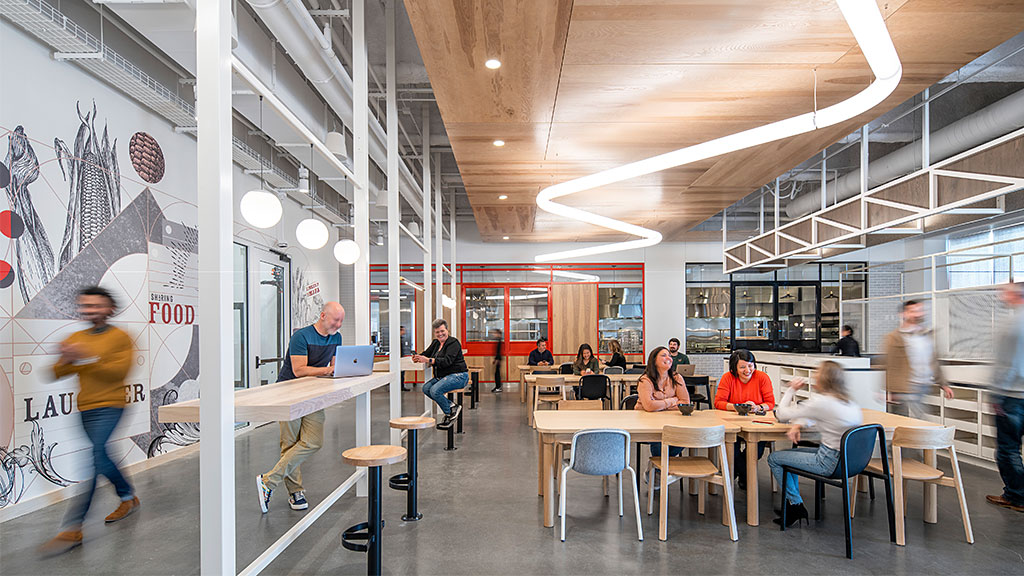
WEBINAR
The Experimental, Experiential Office: What Workplace Can Learn from Retail, Education, and Airports
Gensler’s workplace leaders share what they’ve learned from helping clients across multiple industries navigate the new workplace ecosystem.
Trends in Aviation
The industry pursues carbon goals with cost-effective sustainability designs.
To achieve sustainability goals amid rising costs, airports implement design strategies such as all-electric buildings, net zero designs, rooftop solar panels, and large-scale battery storage systems.
Airports add more convenience and personalized experiences for travelers.
Airports are focused on investments that create hassle-free experiences and streamline common pain points for travelers, including biometric security screening and checkpoint reservation systems.
Airports prioritize their connection to the local community.
To address community concerns, airports will engage with local communities as they embark on major capital investments with workshops, listening sessions, and outreach campaigns.
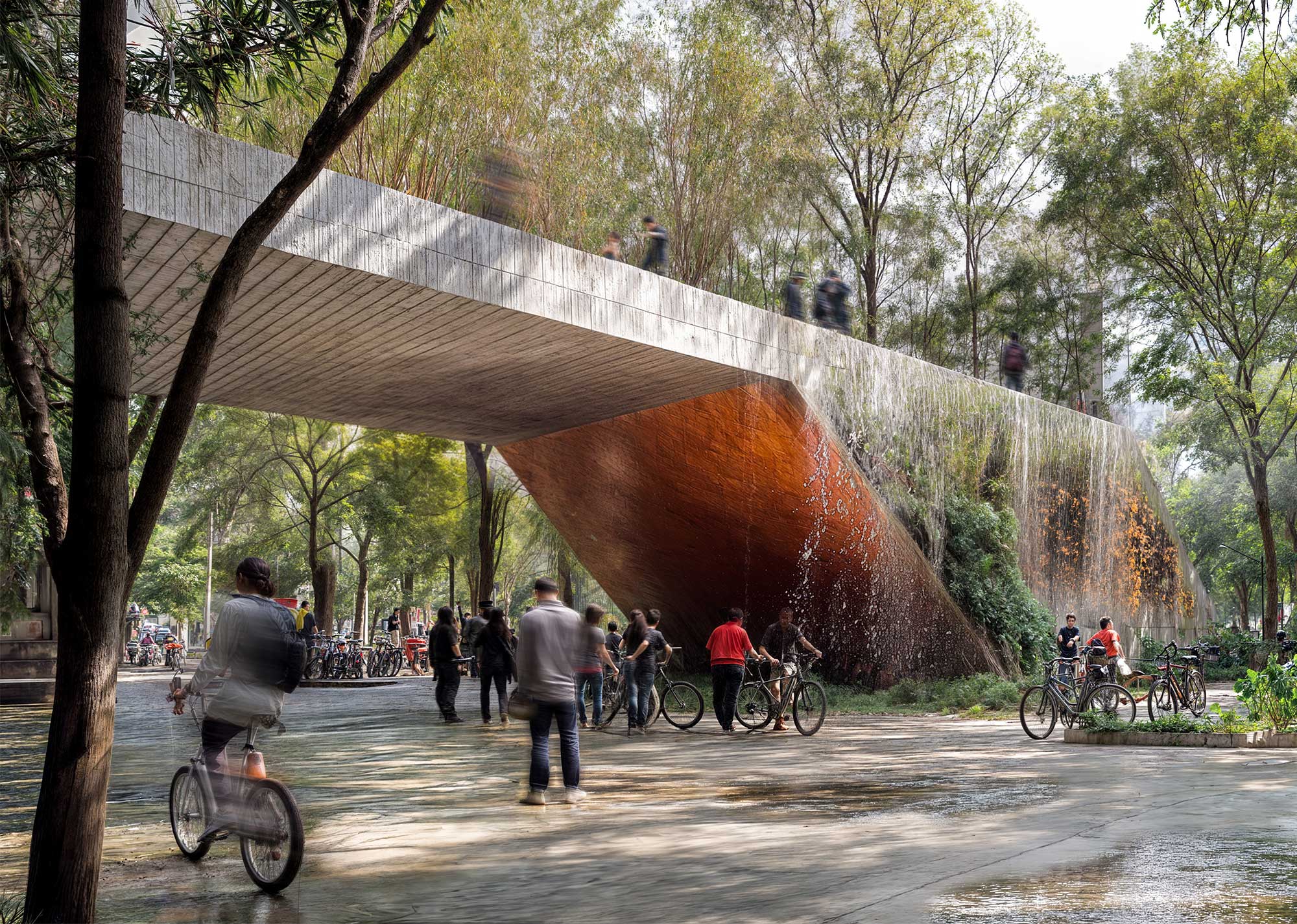
AVIATION LEADERSHIP

Tim Sullivan
Aviation Leader, Studio Director, Principal
Tim Sullivan is a Studio Director in Gensler’s Los Angeles office with over 30 years of experience managing complex, large-scale projects.

Ty Osbaugh
Cities Sector Leader, Aviation Leader, Principal
Ty Osbaugh is a Principal at Gensler and registered architect who is focused on leading the firm’s Cities sector and Aviation practice.

Tim Hudson
Cities Sector Leader, Aviation Leader, Principal
As a Cities Sector and Aviation leader, Tim brings more than 25 years of experience in the planning, design, and delivery of regional, hub, and international airport terminal projects.
NEWS
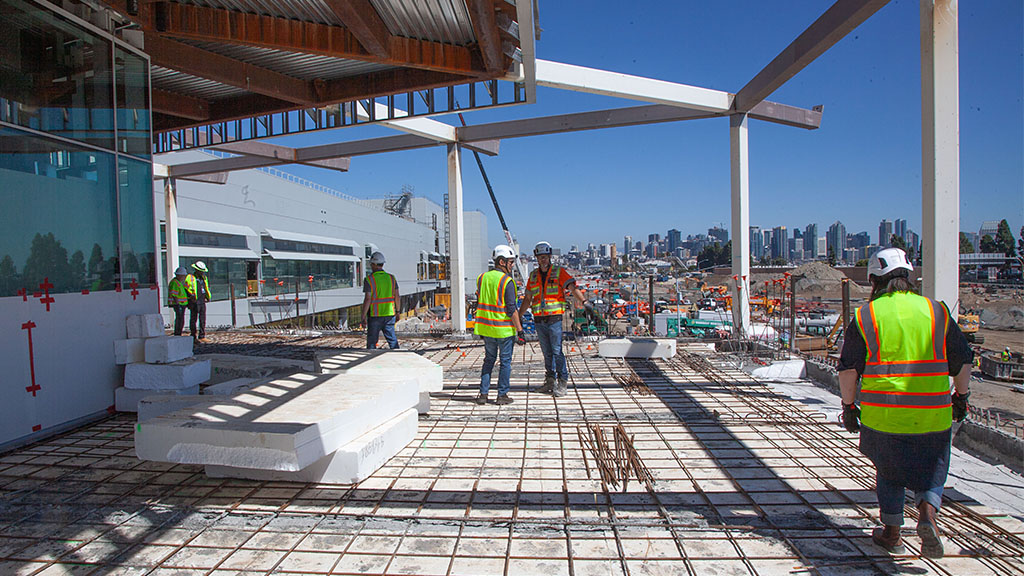
In The Media
![]() Denver Gazette
Denver Gazette
The Rise of “Al Fresco Spaces” at U.S. Airports Benefits Staff and Travelers Alike
Gensler Principal Terence Young shared that Gensler and Turner-Flatiron are creating a giant outdoor terrace at San Diego Airport’s Terminal 1 that will offer sweeping views of the harbor, downtown, and mountains.
May 12, 2025
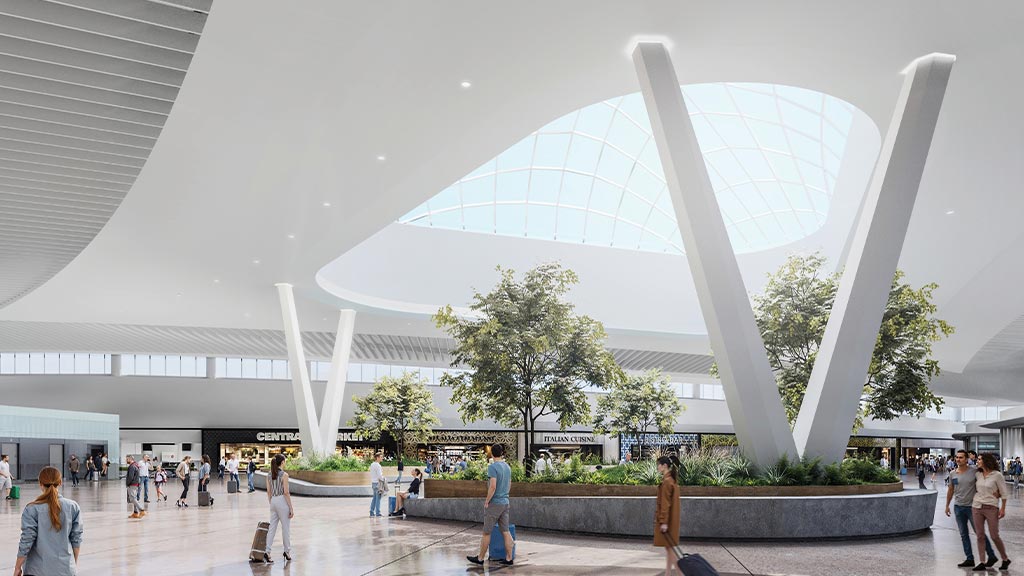
In The Media
![]() Construction Digest
Construction Digest
Construction Digest Announced the Groundbreaking of a New John Glenn Columbus International Airport Terminal
Designed by Gensler in partnership with Moody Nolan, the new 1,000,000-square-foot terminal will increase capacity to serve over 13 million passengers annually.
March 15, 2025
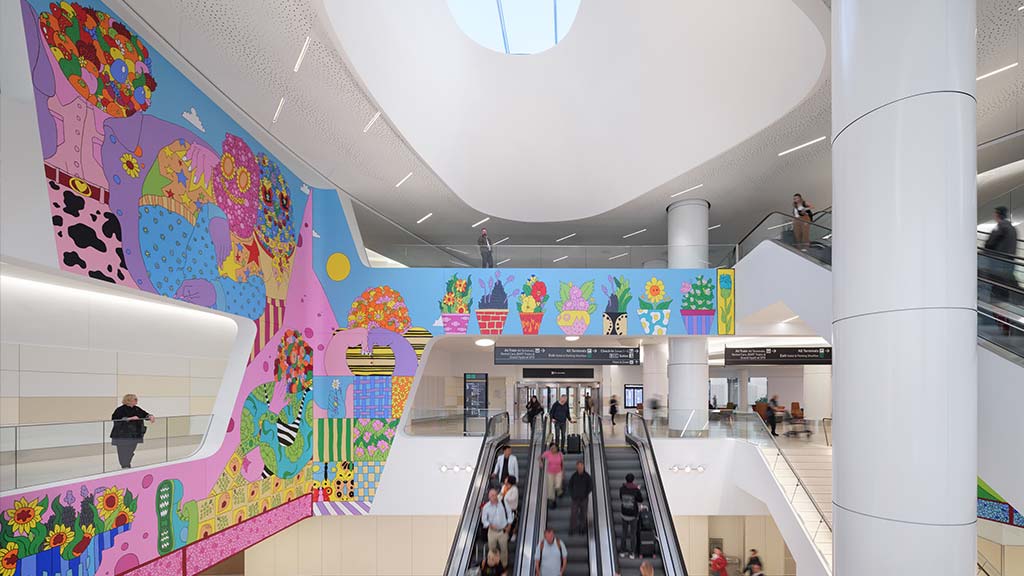
In The Media
![]() Aly Smalls
Aly Smalls
Explore the Gensler-Designed San Francisco International Airport
Travel influencer Aly Smalls spent “24 hours in North America’s best airport.” Explore SFO’s amenities, sensory experiences, dining options, local art, and relaxing spaces. Watch the video.
March 05, 2025

In The Media
![]() Washington Post
Washington Post
The Challenge of Creating Rideshare Zones at Aging Airports With “Locked-in Infrastructure”
Washington Post interviewed Gensler Principal Ty Osbaugh about how how new terminals are designed with rideshare pickups in mind, noting Terminal C at LaGuardia Airport “is a really good model.”
November 29, 2024

In The Media
![]() Pittsburgh International Airport
Pittsburgh International Airport
Pittsburgh International Airport Released a Video Spotlighting Its Airport Design by Gensler + HDR
The new Pittsburgh International Airport is described as “a pavilion in Penn’s Woods” that creates a connection to the Western Pennsylvania region through nature, technology, and community.
October 28, 2024
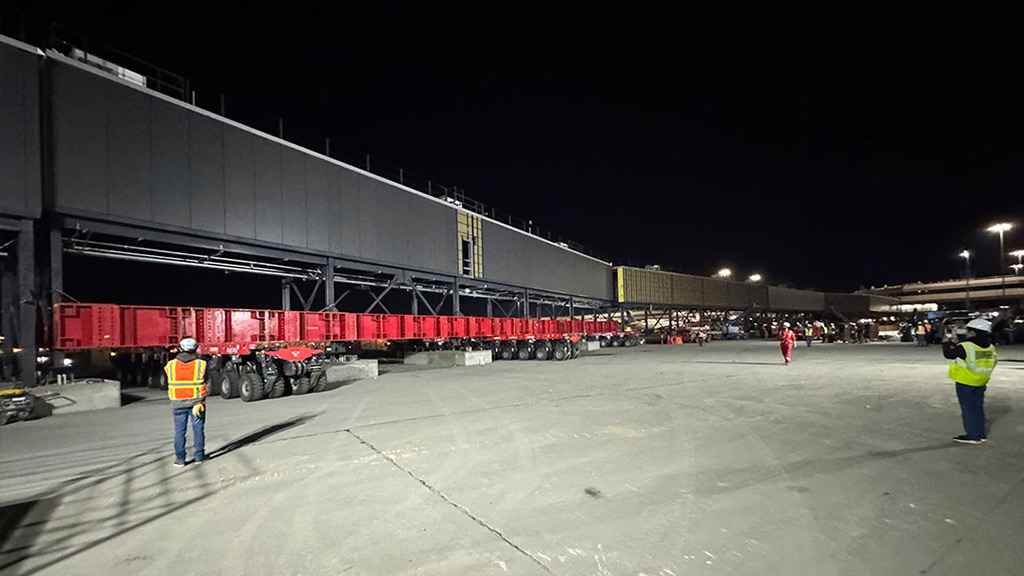
In The Media
![]() Yahoo!
Yahoo!
Construction Is Underway at the SFO Terminal 3 West Modernization Project
Gensler and TEF are leading the expansion and renovation, which will expand retail and dining, improve security, provide a new check-in area, and add technology systems to optimize operations and passenger flow.
September 06, 2024
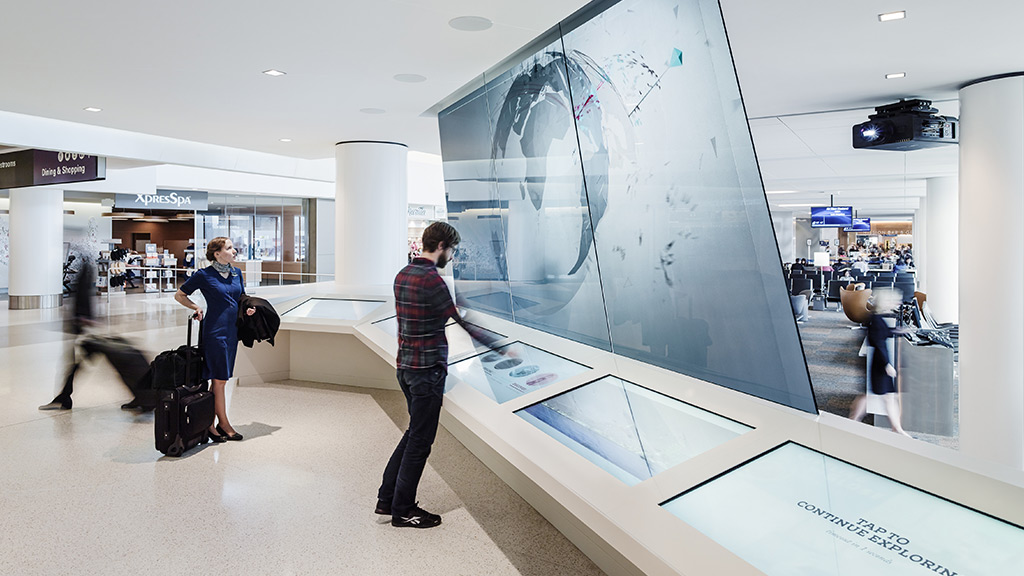
In The Media
![]() Architizer
Architizer
Architizer Explored the New Era of Sustainable and Passenger-Friendly Airports
Gensler’s SFO T3 Boarding Area E renovation “exemplifies innovative design and interactive technology within a thoughtfully curated soothing environment, creating a space where travelers will truly enjoy spending their time.”
August 27, 2024

In The Media
![]() Bloomberg
Bloomberg
The Revival of Regional U.S. Airports From Coast-to-Coast
Gensler Principals Brent Mather and Tim Hudson discussed why it’s key to maintain an “intimate vibe” when expanding a small airport and the importance of designing a hyper-accessible experience.
August 16, 2024
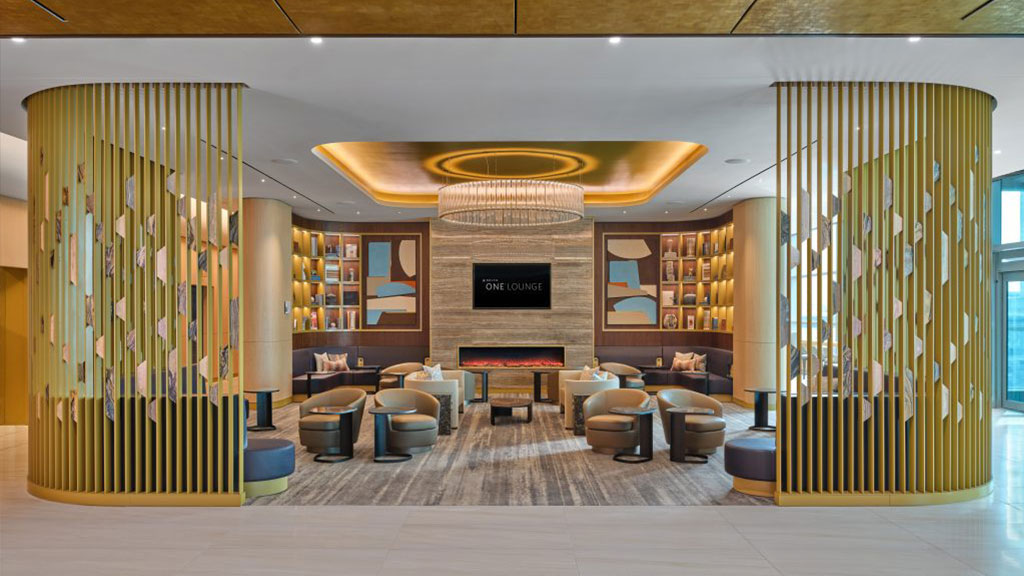
In The Media
![]() Cool Hunting
Cool Hunting
The Delta One Lounge at JFK International Airport Is “A Merger of Luxury and Functionality”
Delta’s Sam Roberts noted that “from day one” Gensler’s hospitality team “understood what we were trying to achieve from an experience perspective.”
August 14, 2024
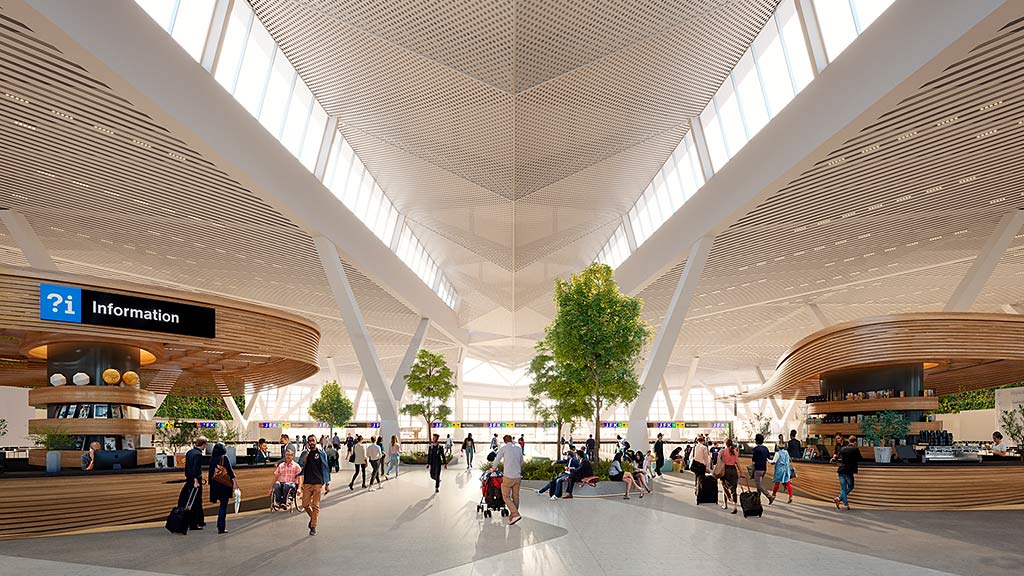
In The Media
![]() Engineering News-Record
Engineering News-Record
New Terminal One at JFK International Airport Takes a “Radically Different” Approach to the Arrival Experience
Ty Osbaugh discussed how the $9.5-billion New Terminal One, designed by Gensler with AECOM, reimagines the arrival experience for international travelers landing in the U.S.
August 08, 2024
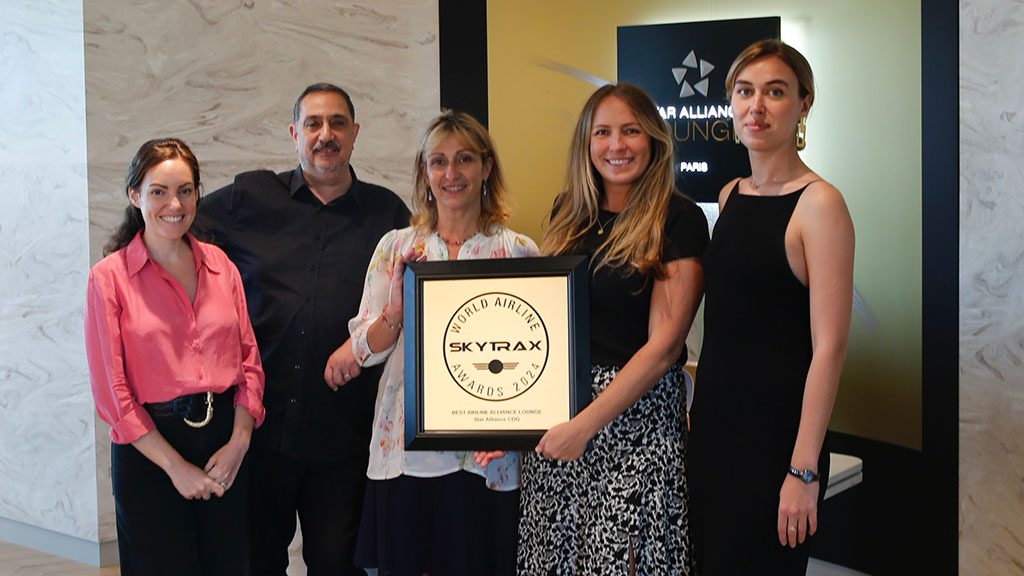
In The Media
![]() World Airline Awards
World Airline Awards
Gensler-Designed Star Alliance Lounge Recognized As the Best Alliance Lounge in the World
The Star Alliance Lounge at Paris’ Charles de Gaulle Airport was recognized as the Best Alliance Lounge in the World by the Sytrax World Airline Awards.
June 27, 2024
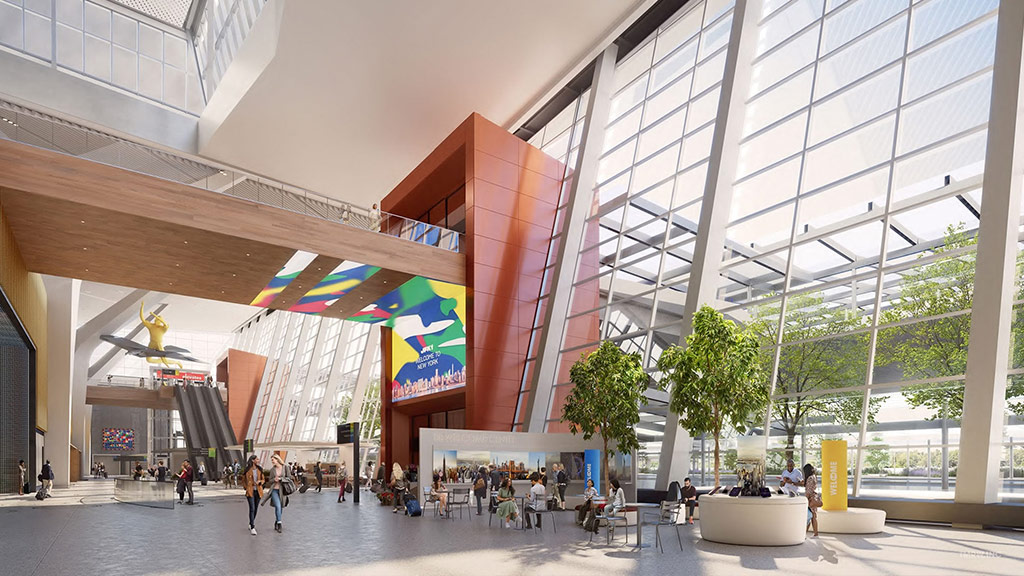
In The Media
![]() Bloomberg
Bloomberg
How State-of-the-Art Makeovers Are Improving All the New York Metro Area’s Airports
Gensler Principal Ty Osbaugh detailed how Gensler’s design of the New Terminal One at JFK International Airport aims to make life easier for passengers.
April 11, 2024
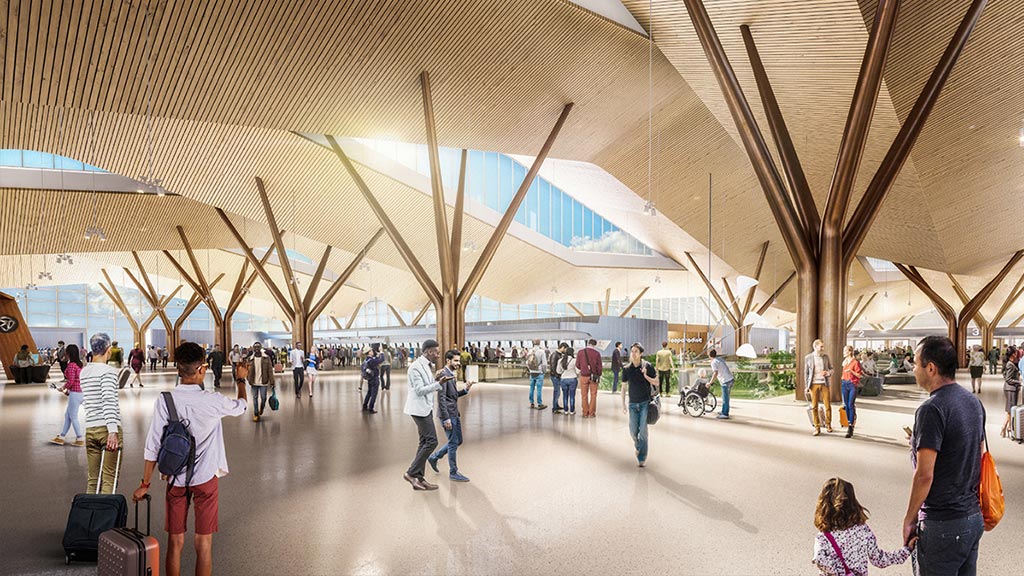
In The Media
![]() Washington Post
Washington Post
How Designers Are Focused on Improving the Restroom Experience at Airports
Principal Ty Osbaugh says the firm is working to make the restrooms at Pittsburgh International Airport “feel like a five-star hotel,” with a weekly rotation of flower bouquets in locally crafted vases.
March 27, 2024
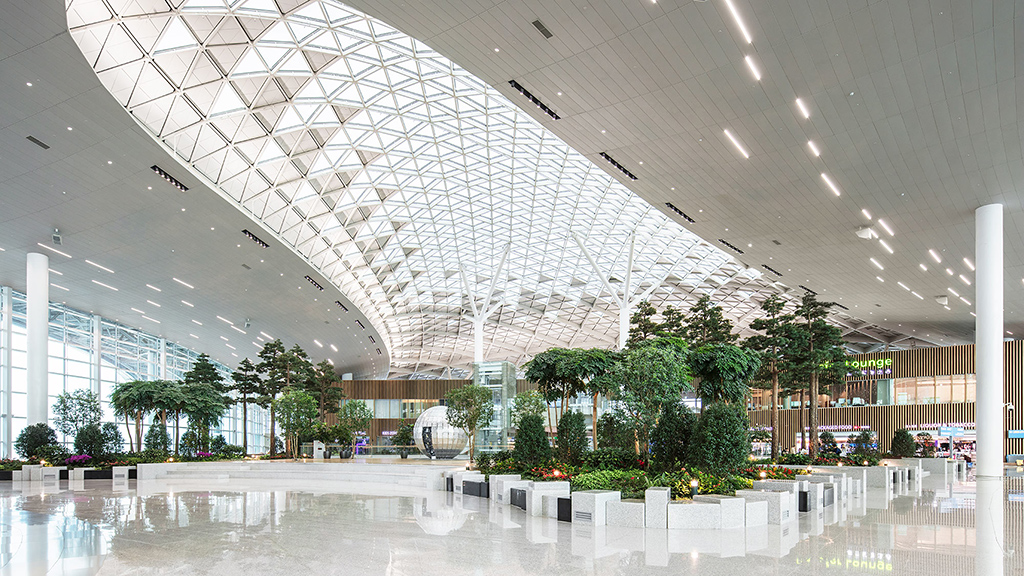
In The Media
![]() The New York Times
The New York Times
New York Times Quoted Gensler’s Terence Young About Popular Features in Airport Designs
Airports are aiming to provide more of a sense of place through access to culture centers and city tours. “We think the airport is an extension of the city,” said Young, who worked on Incheon International Airport’s Terminal 2.
January 26, 2024
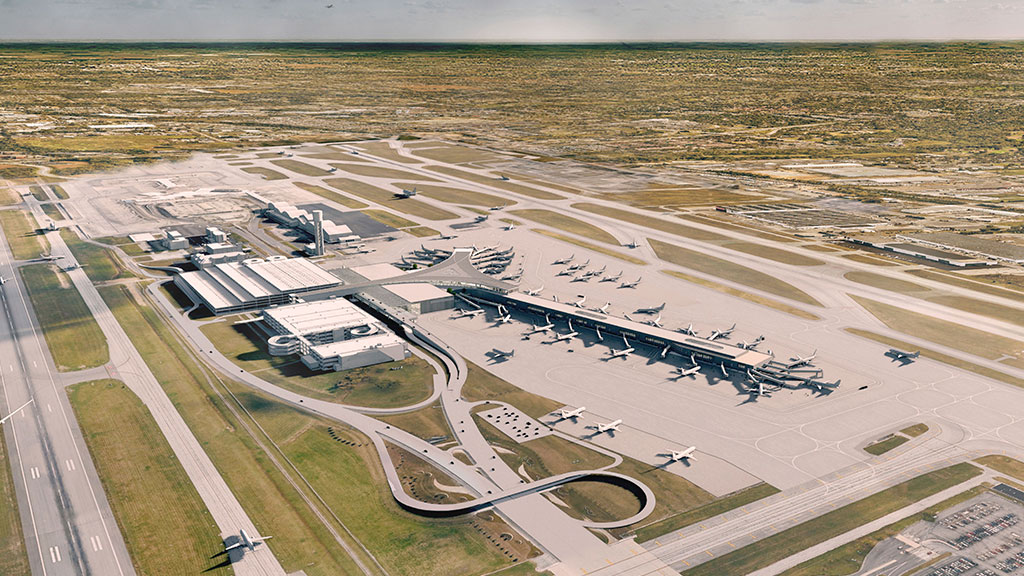
In The Media
![]() ArchDaily
ArchDaily
The Vision for a New Terminal at John Glenn Columbus International Airport in Ohio
With the design led by Gensler and Moody Nolan, the terminal will set new benchmarks for efficiency, sustainability, and passenger comfort.
August 29, 2023
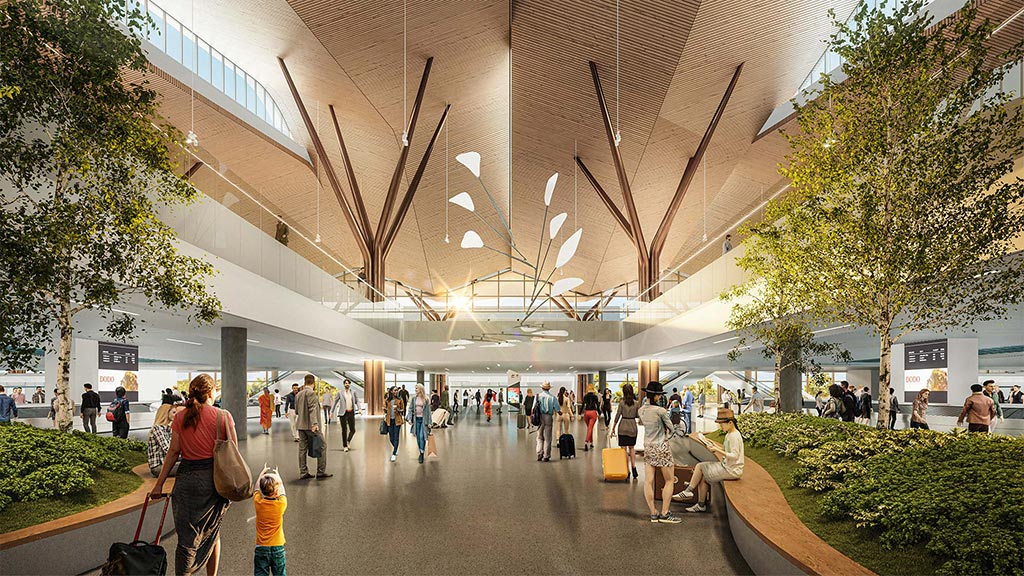
In The Media
![]() The Wall Street Journal
The Wall Street Journal
The Wall Street Journal Explored the Airport Terminal Design Trend of Creating More Open-Air Spaces
Gensler’s Charles Morley shared how the Pittsburgh International Airport terminal incorporates daylight and outdoor spaces for a more relaxing, restorative traveler experience.
August 25, 2023